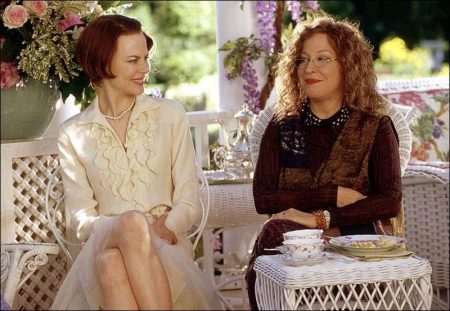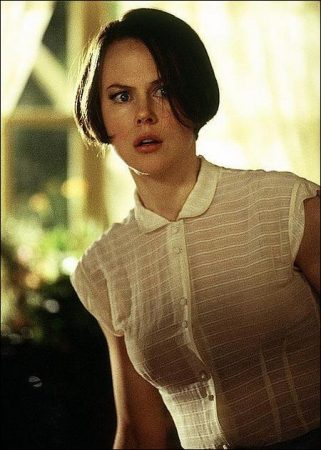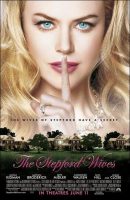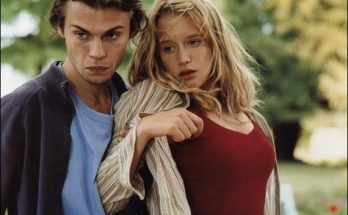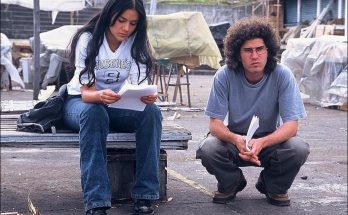Tagline: The wives of Stepford have a secret.
The Stepford Wives movie storyline. A subversive and comic look at rampant consumerism and the quest for perfection, “The Stepford Wives” exposes what it really means to be human by looking beneath the perfect veneer of an idyllic community nestled in our very imperfect world. Featuring an extraordinary cast, “The Stepford Wives” stars Nicole Kidman, Matthew Broderick, Bette Midler, Christopher Walken, Faith Hill and Glenn Close in a comedic thriller about a community that dares to be perfect and learns that to err is human.
Joanna Eberhart (Nicole Kidman) thinks she’s made it to the top of her world. The youngest president in the history of the EBS television network, she also has an attentive husband and two beautiful children. On the surface, Joanna’s life appears to be, well, perfect… until one catastrophic day when it all comes crashing down around her. Fired from her job, her perfect marriage in trouble, unable to remember where her kids go to school, Joanna is starting to look like a candidate for electroshock therapy.
Yes, there’s nothing like a nervous breakdown to make Joanna and her husband Walter (Matthew Broderick) reexamine their priorities, pack up the family and make a fresh start in the idyllic suburban paradise of Stepford, Connecticut. But something strange is happening in the quaint little town of Stepford, and Joanna is suspicious. So is Bobbie Markowitz (Bette Midler), who recently moved to town with her irascible frat-boyish husband Dave (Jon Lovitz). And Roger Bannister (Roger Bart), an architect who came to Stepford hoping to save his rocky relationship with his conservative partner Jerry, is wondering what’s going on, too.
It’s the wives. They’re all like Claire Wellington (Glenn Close) – beautiful, happy and unusually creative with crafts. They can bake a cake, paint the house, mow the lawn, play with the kids and still greet their husbands in lacy lingerie at the end of a busy day. Disturbed by the stunning but subservient women she meets in Stepford, Joanna grows increasingly uneasy. On the other hand, Walter couldn’t be happier. He’s especially impressed by the Stepford Men’s Association, a fortress-like mansion in the center of town. “This town, and the houses, and this place – it’s like a dream,” enthuses Walter. “Like the way life should be.”
About the Production
While there is no real town of Stepford in the state of Connecticut, there are indications that Ira Levin, the novel’s author, was inspired by the small towns of Fairfield County, beautiful suburban communities with enormous homes and manicured lawns. To bring this fictional town to life, director Frank Oz reunited with Rob Hahn, his cinematographer from “The Score” and “In & Out”; production designer Jackson De Govia, who worked with him on “The Score” and “Bowfinger”; and Academy Awardâ-winning costume designer Ann Roth, his collaborator on “In & Out.”
Production designer De Govia understood exactly what the filmmakers were looking for – a wealthy suburb of New York City where people come to relax and to enjoy their gains, whether ill-gotten or not.
“People in Stepford are living at the height of stylish luxury and they make no apologies for their lifestyle,” says De Govia. “No one questions whether they deserve the opulence. They simply have it and intend to take full advantage of it.”
To contrast the idyllic Stepford from the “real world,” director Oz begins the film in New York, concentrating on stark shots of steel, glass and concrete. “It’s a little harsh, and we meant it to be that way,” explains Oz. “That way, when we get to Stepford, everything looks that much more lovely and soft, including the women.”
Scouting dozens of communities in Connecticut as well as New Jersey, the filmmakers looked for homes and neighborhoods that reflected the stylistically idealized town the script called for.
“The look of Stepford is defined by new money,” says Oz. “It’s money made by computer people, electronics people and dot-coms. Their homes are new and gorgeous and there’s no real history or texture to this town.”
Paul Rudnick compares Stepford to a Martha Stewart/Ralph Lauren style of living. “It’s very centered on a kind of sentimental Norman Rockwell vision of the world, a lifestyle that, in reality, you couldn’t achieve without an enormous staff and plenty of servants,” explains Rudnick. “The ideal for the female side of Stepford involves a lot of baking, doilies and difficult-to-iron linen tablecloths. As for the male influence, it’s all mahogany and suede, a kind of post-college frat house feel.”
Renowned costume designer Ann Roth adds that the male side is filled with saturated colors and heavy with pigment, while the female side is enhanced by floral colors. “Martha Stewart’s colors come from nature and spring,” explains Roth. “That’s why you see all these peaches and aquas and greens and yellows in the homes and why you see all these purples and reds and mahoganies on the men’s side. It sort of begs the question: How can a guy like this get a girl like that? And the answer is they made them – all beautiful, all with high perfect bust lines, all with 25-inch-or-less waists and all perky as hell!”
When production commenced at Kaufman Astoria studios, the company began with the interior scenes in Bobbie Markowitz’ (Bette Midler) kitchen, a huge, modern layout combining a kitchen and great room. Set decorator Debra Schutt established the gilded lifestyle with high-end appliances and designer furniture, and florist Christopher Bassett played a pivotal role throughout the shoot, using elaborate and exotic flowers to further illustrate the luxurious Stepford home.
“There’s something about the metaphor of those flowers, perfectly arranged, which is really powerful,” suggests Bassett. “Flowers are a very effective way of bringing the outside world in and transforming a home into a dream house.”
As for the set decoration, Schutt had a fantastic time creating all the homes, but Bobbie Markowitz’ was probably one of the most radical. “Bobbie’s home is transformed from a rat’s nest of magazines, newspapers, frozen food containers and dirty clothes to a sumptuous and spotless home that you might find in the pages of Architectural Digest,” explains Schutt. “It is something of a metaphor for the Stepford wives who are transformed into architectural perfection, as well.”
The Stepford Wives (2004)
Directed by: Frank Oz
Starring: Nicole Kidman, Glenn Close, Christopher Walken, John Cusack, Joan Cusack, Matthew Broderick, Bette Midler, Jon Lovitz, Dylan Hartigan, Matthew Broderick
Screenplay by: Paul Rudnick
Production Design by: Jackson De Govia
Cinematography by: Rob Hahn
Film Editing by: Jay Rabinowitz
Costume Design by: Ann Roth
Set Decoration by: Debra Schutt
Art Direction by: Peter Rogness
Music by: David Arnold
MPAA Rating: PG-13 for sexual content, thematic material & language.
Distributed by: Paramount Pictures
Release Date: June 11, 2004
Views: 71

